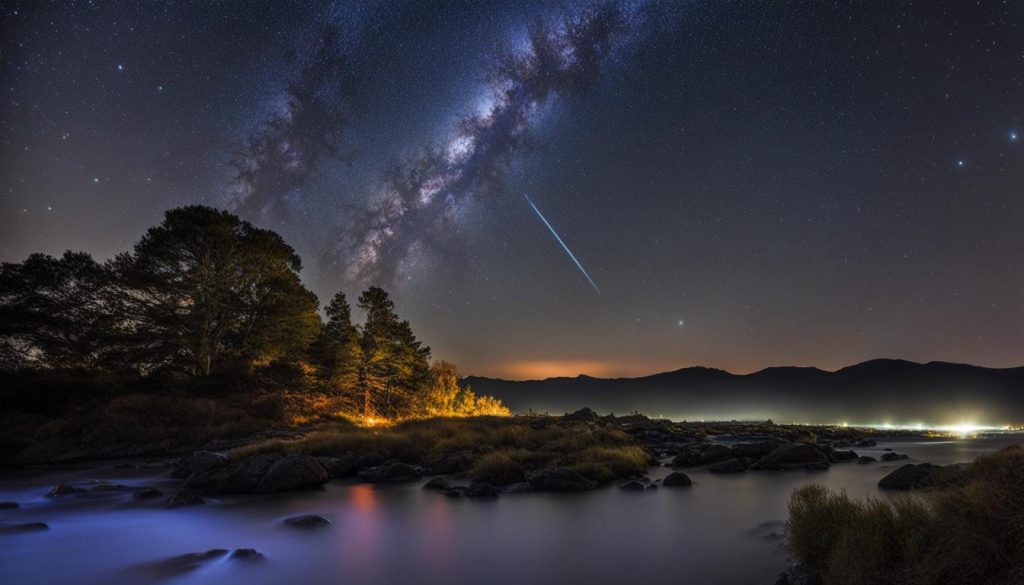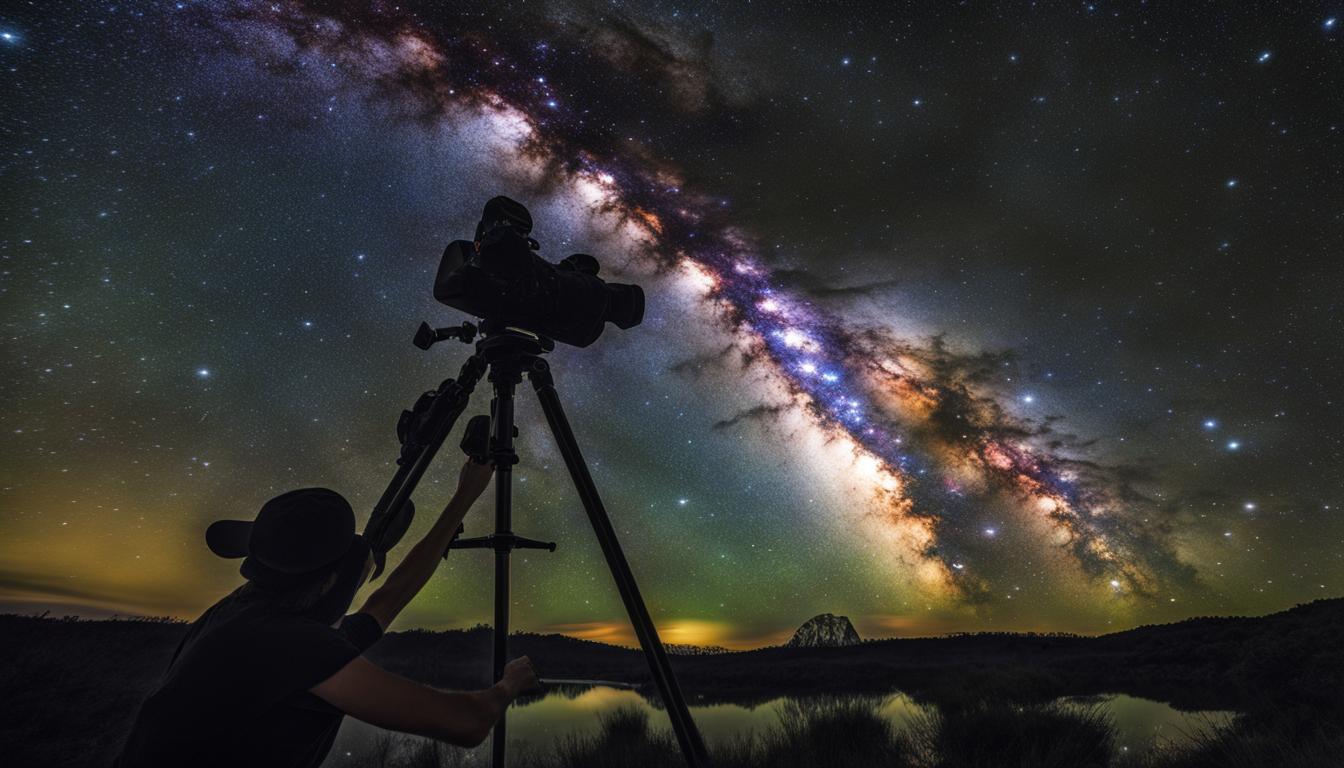Capturing stunning images of the night sky requires careful planning, preparation, and a keen eye for detail. Whether you’re a seasoned astrophotographer or just starting out, having a comprehensive astrophotography checklist is essential. In this section, we will provide you with the ultimate astrophotography checklist that will help you create breathtaking night sky images effortlessly.
From selecting the right equipment to mastering essential techniques, our checklist covers everything you need to know to capture stunning stellar shots. So, grab your camera, check your gear, and let’s get started!
Key Takeaways:
- An astrophotography checklist is essential for capturing stunning night sky images
- Proper planning and preparation are crucial for successful astrophotography sessions
- Mastering essential techniques, such as long exposure photography and focusing on celestial objects, can greatly improve your results
- Researching celestial events and checking weather conditions can help increase your chances of success
- With practice and dedication, you can become a master at astrophotography
Choosing the Right Equipment for Astrophotography
Capturing stunning images of the night sky involves having the right equipment for the job. Here’s what you need to know about selecting the perfect astrophotography equipment.
Camera
The camera is the most crucial piece of equipment for astrophotography. Opt for a camera that has a high ISO range, can take long exposures, and has good noise-reducing capabilities. Popular camera brands for astrophotography include Canon, Nikon, Sony, and Pentax.
Lens
A wide-angle lens with a low focal ratio is ideal for astrophotography, as it can capture a wide field of view and allow more light to enter the camera. Some popular lens options include the Canon EF 16-35mm f/2.8L III USM Lens and the Nikon AF-S Nikkor 14-24mm f/2.8G ED Lens.
Tripod
A sturdy tripod is crucial to keep your camera steady during long exposures. Look for models that are durable and can support the weight of your camera and lens. The Manfrotto MT055CXPRO3 Carbon Fiber Tripod is a popular choice for astrophotography.
Tracking Mount
A tracking mount can help compensate for the Earth’s rotation during long exposures, allowing for sharper images of celestial objects. The Sky-Watcher Star Adventurer Mini Pro Pack is a compact and portable option for astrophotographers.
“Choosing the right equipment for astrophotography is crucial to capturing stunning imagery of the cosmos.”
Investing in quality astrophotography equipment will greatly enhance your chances of capturing breathtaking shots of the night sky. Make sure to carefully research and invest in the equipment that best fits your needs and budget.
Preparing for a Successful Astrophotography Session
Before heading out with your camera to capture stunning night sky images, it’s essential to make the necessary preparations. Here are some important aspects to consider for astrophotography session preparation:
- Research celestial events in your area to plan your shoot. Check the moon phase, rise and set times of the Milky Way and other celestial objects, and whether any nearby planets will be visible.
- Check the weather conditions and choose a clear night to get the best results. Avoid shooting in cloudy or hazy conditions or during a full moon night.
- Ensure your camera settings are optimized for astrophotography. Set your camera to manual mode, adjust the aperture to the widest possible, and the ISO to a high value, between 3200-6400. Use a shutter speed between 15-20 seconds and experiment with longer exposures for better results.
Following these tips will help you prepare in advance for a successful astrophotography session and capture stunning night sky images.
Essential Techniques for Astrophotography
When it comes to astrophotography, knowing the right techniques can make all the difference in capturing stunning images of the cosmos. Here are some essential techniques to master:
Long Exposure Photography
Long exposure photography is a must for capturing clear images of the starry night sky. This technique involves using a slow shutter speed, allowing more light to enter the camera and resulting in brighter images. The ideal shutter speed varies depending on the scene and equipment used, but typically ranges anywhere from 10-30 seconds.
Stacking Images
Stacking images involves taking multiple photographs of the same scene and combining them to create one final image. This technique helps to reduce noise and increase image detail. To stack images, use software such as DeepSkyStacker or StarStaX.

Focusing on Celestial Objects
Focusing on celestial objects can be challenging, but it’s crucial for capturing sharp and clear images. One technique to use is the “live-view” mode on your camera, zooming in on a bright star and manually adjusting the focus until it’s sharp. Another technique is to use a Bahtinov mask, which helps to achieve precise focus quickly and accurately.
Using Filters to Enhance Your Shots
Filters can be used to enhance the colors and details in your astrophotography images. A popular filter for astrophotography is the light pollution filter, which helps to reduce the impact of artificial light on your images. Other filters, such as the hydrogen-alpha filter, can enhance the visibility of certain celestial objects.
By mastering these essential techniques, you’ll be well on your way to capturing stunning astrophotography images that will take your breath away.
Conclusion
Capturing stunning images of the night sky can be a daunting task, but with the help of our ultimate astrophotography checklist, you can simplify the process and achieve breathtaking results. Remember, choosing the right equipment, making the necessary preparations, and mastering essential techniques are key to creating stunning stellar shots.
Don’t get discouraged if your first attempts don’t turn out the way you envisioned. As with any skill, astrophotography takes practice and dedication. Keep experimenting with different settings and techniques, and you’ll be amazed at what you can achieve.
So, grab your camera, head out into the great outdoors, and start capturing the beauty of the cosmos. With our astrophotography checklist as your guide, the possibilities are endless. Wishing you happy astrophotographing!






